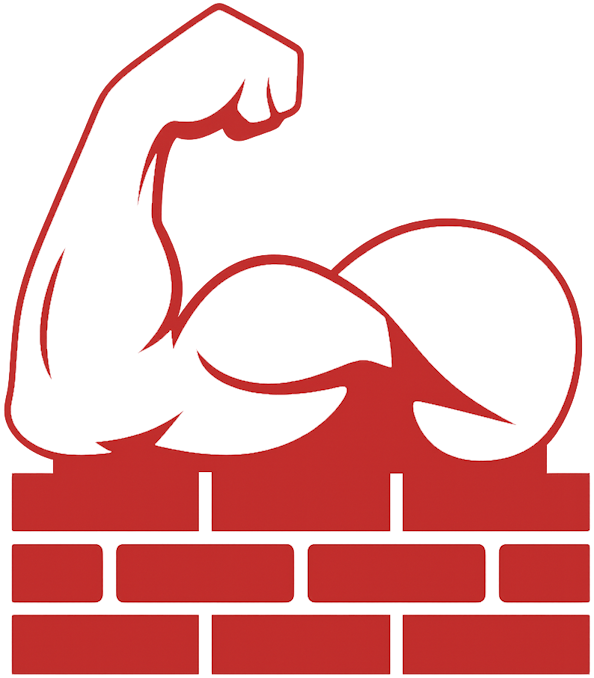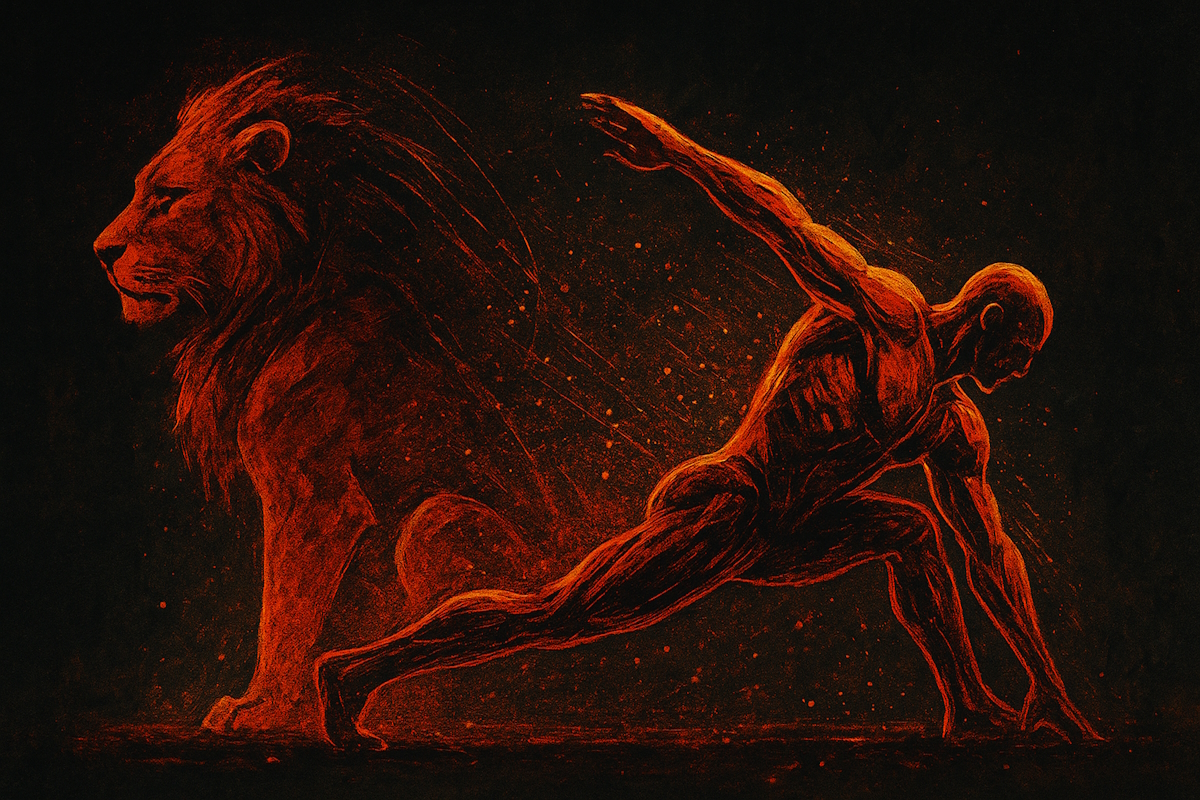From the Brickyard | Subject: Don’t just build muscle—unleash it.
——
You Build the Muscle. Stretching Lets It Roam Free.
Muscle without mobility is like a lion in a cage.
You can stack plates and grind reps. But if your body moves like a rusted-out crowbar?
You’re leaving power, performance, and longevity on the table.
Let’s be real: Most lifters stretch like they floss—rarely, poorly, or not at all.
But the Musclebuilder isn’t most lifters.
You’re building strength for life. For fatherhood. For the fight. And that means training for function, not just flex.
That means you stretch.
The Ugly Truth: Most Guys Are Stiff and Tight
We sit too much. We hunch too much. We train hard and recover soft.
Result? Tight hip flexors, locked-up hamstrings, stiff backs, and shoulder joints that feel like they’re 60 when you’re 35.
Tight muscles don’t just feel bad—they perform bad.
- Range of motion tanks
- Power output drops
- Injury risk spikes
- Recovery slows
- Posture crumbles
Flexibility work has been shown to improve joint range of motion and may help reduce muscle-strain injuries when consistently practiced. Chronic stretching programs can complement strength training by improving mobility and movement efficiency (Behm et al., 2016; McHugh & Cosgrave, 2010).
You built that muscle. Now let it move.
Muscle Without Mobility is a Liability
You ever see a jacked dude who can’t scratch his back or touch his toes?
Looks impressive…until he tries to tie his shoes and pulls a hammy.
The Musclebuilder doesn’t just want to look powerful—he wants to be powerful.
Flexibility and mobility are the keys to a usable body. That means:
- Deeper, stronger, and safer lifts
- Better posture
- Smoother recovery
- Fewer tweaks, strains, and setbacks
Look like a statue. Move like an athlete.
Stretching: The Recovery Weapon Nobody Talks About
You know what stretching also does? It helps you recover like a machine.
Right after training, your body’s on high alert—sympathetic nervous system cranked, heart rate up, cortisol flying.
Pairing easy static stretching with slow, diaphragmatic breathing helps shift the body into parasympathetic recovery (higher HRV) and can improve cortisol regulation over time (Zaccaro et al., 2018; Laborde et al., 2022; Corey et al., 2014).
Stretching post-workout isn’t fluff—it’s next-level recovery tech.
How to Stretch Like a Musclebuilder
You don’t need to go full yoga monk. But you do need a routine.
Here’s how to keep it primal and powerful:
Daily Mobility Warm-Up (5–10 minutes)
Start every session with dynamic moves:
- Hip circles
- Arm swings
- Leg swings
- World’s Greatest Stretch
- Cat/Cow + T-Spine Rotations
Dynamic stretching before lifting has been shown to improve strength and power performance in strength-trained athletes.
Research comparing dynamic and static warm-ups found that dynamic stretching enhances performance and doesn’t blunt strength output—while static stretching before heavy lifting can temporarily reduce force and power (Samson et al., 2013; BMC Sports Science, Medicine & Rehabilitation, 2023).
In short: fire up the muscle, don’t put it to sleep. Hit your dynamic warm-up first—save the long static holds for the cooldown.
Post-Workout Static Stretching (5–10 minutes)
- Hold each stretch 30–60 seconds
- Breathe deeply through the nose
- Focus on muscles worked that day
Bonus points for foam rolling, band flossing, or lacrosse ball work—especially if you’re feeling like a busted-up action figure.
Build. Stretch. Dominate.
Stretching doesn’t make you soft—it makes you durable.
It keeps your muscle usable. Your joints pain-free. Your performance primed. Your mission on track.
The guy who trains hard but skips mobility? He breaks down.
The Musclebuilder? He stays in the game.
Stretching isn’t separate from your training—it’s the final rep.
The closing ritual. The muscle maintenance. The long game.
Bottom Line: Stretch Like a Warrior, Not a Weekend Warrior
Muscle is only as good as the movement it allows.
Stretch daily. Move better. Recover faster. Train longer.
It’s not just about being strong—it’s about being ready.
Brick by brick.
-Brickwall
Sources
Behm, David G., Anthony J. Blazevich, Anthony D. Kay, and Michael McHugh. “Acute Effects of Static Stretching on Strength and Power Performance.” Journal of Strength and Conditioning Research, vol. 30, no. 2, 2016, pp. 534–540. https://pubmed.ncbi.nlm.nih.gov/26642915/
McHugh, Malachy P., and Caroline H. Cosgrave. “To Stretch or Not to Stretch: The Role of Stretching in Injury Prevention and Performance.” Sports Medicine, vol. 40, no. 9, 2010, pp. 747–762. https://pubmed.ncbi.nlm.nih.gov/20030776/
Samson, Michael, Duane C. Button, Anis Chaouachi, and David G. Behm. “Effects of Dynamic and Static Stretching within General and Activity-Specific Warm-Up Protocols.” Journal of Strength and Conditioning Research, vol. 27, no. 4, 2013, pp. 1139–1151. https://pubmed.ncbi.nlm.nih.gov/24149201/
“A Systematic Review and Network Meta-Analysis of the Effects of Different Warm-Up Methods on Explosive Lower Limb Strength.” BMC Sports Science, Medicine & Rehabilitation, vol. 15, 2023, Article 111. https://pubmed.ncbi.nlm.nih.gov/37644585/
Zaccaro, Andrea, et al. “How Breath-Control Can Change Your Life: A Systematic Review on Psycho-Physiological Correlates of Slow Breathing.” Frontiers in Human Neuroscience, vol. 12, 2018, Article 353. https://www.frontiersin.org/journals/human-neuroscience/articles/10.3389/fnhum.2018.00353/full
Laborde, Sarah, et al. “Effects of Voluntary Slow Breathing on Heart Rate and Heart Rate Variability: A Systematic Review and a Meta-Analysis.” Neuroscience & Biobehavioral Reviews, vol. 132, 2022, pp. 470–486. https://pubmed.ncbi.nlm.nih.gov/35623448/
Corey, Susan M., et al. “Effect of Restorative Yoga vs. Stretching on Diurnal Cortisol Regulation among Women with Metabolic Syndrome.” Journal of Alternative and Complementary Medicine, vol. 20, no. 12, 2014, pp. 971–979. https://pubmed.ncbi.nlm.nih.gov/25127084/
Simic, L., N. Sarabon, and G. Markovic. “Does Pre-Exercise Static Stretching Inhibit Maximal Muscular Performance?” Scandinavian Journal of Medicine & Science in Sports, vol. 23, no. 2, 2013, pp. 141–148. https://pubmed.ncbi.nlm.nih.gov/22316148/
Martarelli, Debora, Maria Cocchioni, Silvia Scuri, and Pierluigi Pompei. “Diaphragmatic Breathing Reduces Exercise-Induced Oxidative Stress.” Journal of Sports Medicine and Physical Fitness, vol. 51, no. 1, 2011, pp. 136–139. https://pubmed.ncbi.nlm.nih.gov/19875429/

